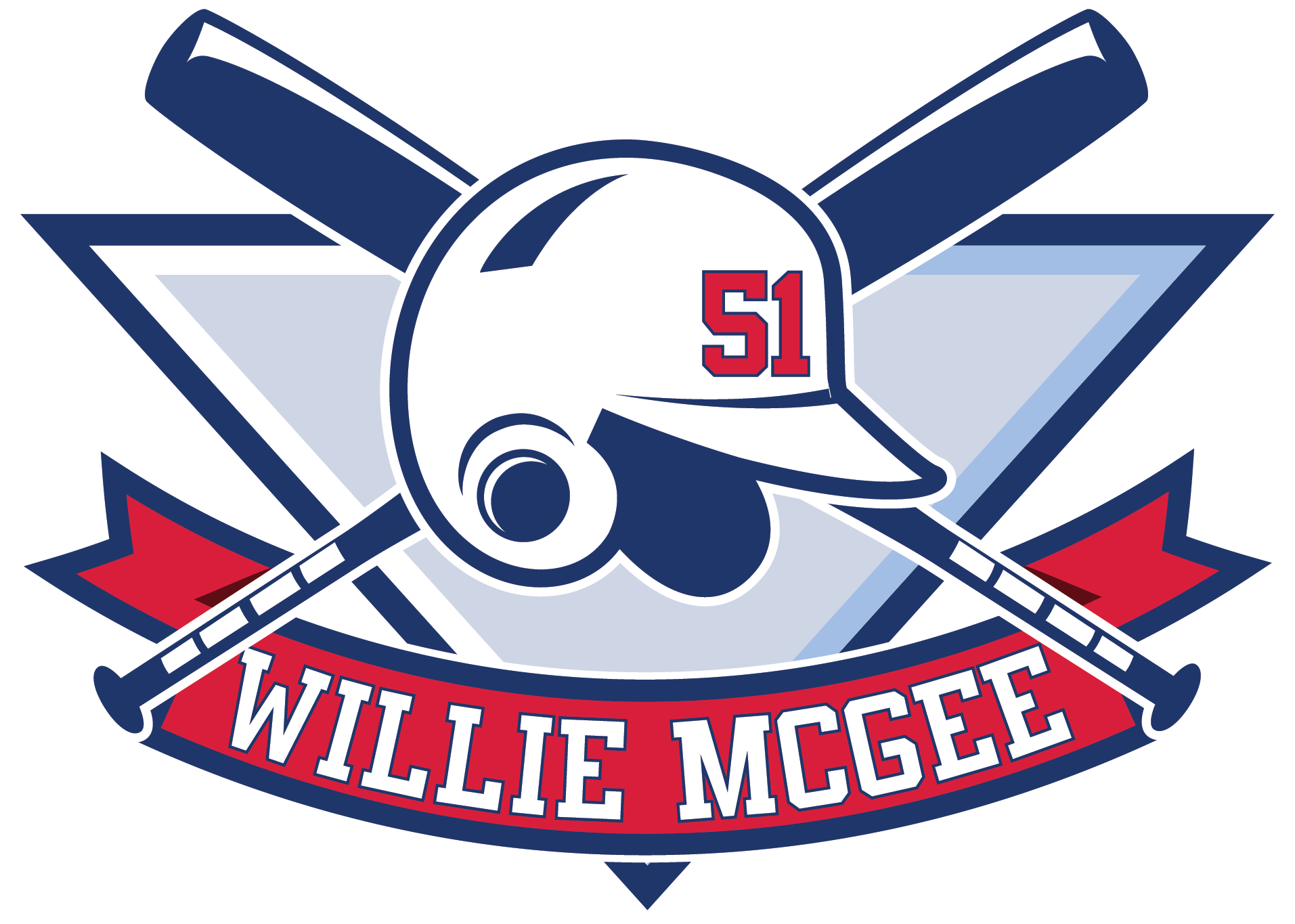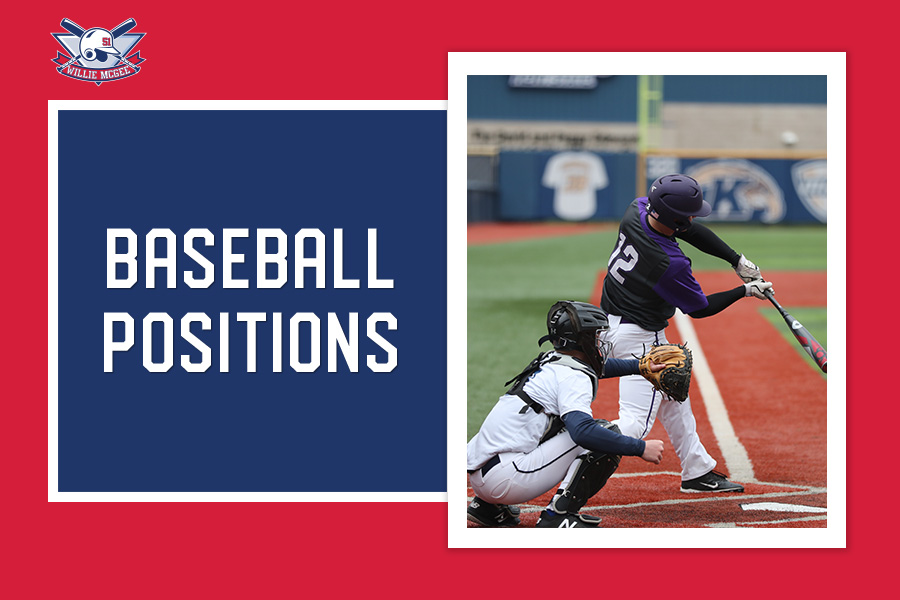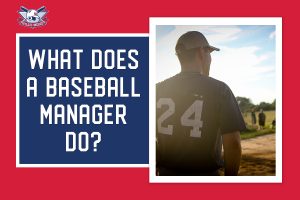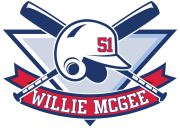Did you ever wonder what baseball position numbers are for and their division? Maybe you’ve heard some things like “double play” or “defense shifts” and don’t know what it may refer to. Lucky for you, I’m devoting this article to explaining everything you need to know about baseball fielding positions and their roles.
If you’re completely new to this sport, there are nine primal and numbered roles on the map of baseball positions. Each of these players has their own individual tasks and responsibilities that contribute to the team’s success.
Baseball is a passionate game filled with many ups and downs. Sometimes we strike out, while other times, we hit the home run. Either way, this game teaches everyone involved life lessons of wins and losses, failures and success.
Continue reading this article to discover all you need to know about baseball positions. Let me give you an insight into every role and responsibility of every player on the field. Additionally, learn a little more about the history and popularity of baseball as well as its evolution.
Baseball
Baseball is a competitive game that dates back to the 1740s. The first time the term base-ball is used can be found in John Newbery’s children’s book “A Little Pretty Pocket-Book”. The book has a brief poem and an illustration describing a game called base-ball.
Ever since the formats of the game have been mostly in place until today’s modern era. Baseball has become predominant among many cultures, including North America, Canada, and Japan.
In short, baseball is a game played with a ball, a bat, and gloves, between two teams of nine with four white bases laid out in a diamond. The purpose and object of the game is to score more runs than your opponent. The whole idea is to hit the ball your opponent throws at you as far as possible before running around four bases to complete a run. Once a player manages to get around all four bases before getting tagged out, another batter steps in.
The game is played worldwide, with its highlight and peak coming from the World Series of Baseball. The World Series is one of the most renowned events in baseball history, where we gather to cheer for the world’s best baseball players.
Baseball Positions
In order to understand the game, I will introduce you to the roles and positions of each player in the field. I’ve separated them into four categories so you can clearly recognize and acknowledge how the game works.
I’ve divided baseball positions in order of importance into infield positions, infield roles, outfield positions, and specialized positions. These positions and players make baseball what it is today. Every strategy, play, and score comes from these players and is what makes the game worth playing and experiencing.
Below, I will go into further detail about each position so you better understand the game’s depth.
Infield Positions
Firstly, the infield positions are the core players positioned on the infield diamond. These positions consist of a pitcher and catcher and are one of the most important positions in baseball.
The pitcher
The pitcher is located on the pitching mound in the middle of the infield diamond. The pitcher and catcher must have strategic communication in order to make a good play and score. Generally, they rely on non-verbal communication and signs.
The pitcher’s responsibility is to throw the ball into the batters with an array of prediction, accuracy, and technical pitches.
In addition to strictly pitching, the pitcher may also be a part of other roles. This includes the player standing as a fifth infielder. They take charge of bunts, infield grounders, and pop-ups that are at the nearest distance from them.
As a pitcher, you must keep your head on a swivel. Look out for base runners attempting to steal or lead off a base too far to pick them off.
This player will be most comfortable wearing a smaller infield glove with closed webbing. This works best for shielding the handgrip from the opposing team. In my opinion, the pitcher is one of baseball’s most important defense players.
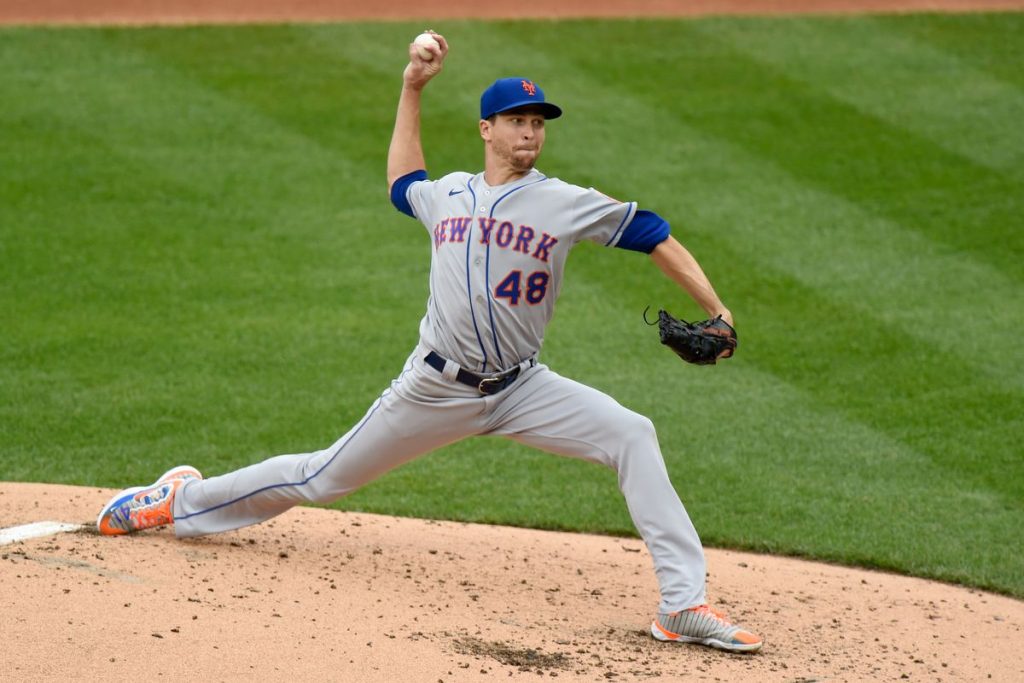
The Catcher
The other player that makes up the infield position is the catcher. This player is placed directly behind the home plate. They have direct contact with the pitcher.
Catchers are responsible for handling and receiving the pitches thrown by the pitcher. They are also in control of suggesting which pitch the pitcher should throw.
Aside from this, catchers are the prime communicators of the baseball team. They are the only ones facing their team and the outfield. They communicate things such as the number of outs, strikes, and which base the play is at.
Every catcher must have a catcher’s glove to catch fast pitches. This glove is much bigger than an infielder glove. It contains a unique curve, a deep pocket, and extra padding in the heel. However, if you want more protection from fast pitches, I suggest getting a hold of palm savers.
The infield roles
The infield roles include the first baseman, the second baseman, the shortstop, and the third baseman. These roles generally handle plays that involve tagging a base or runner.
The first baseman
The first baseman player is positioned along the first baseline on the field. I consider this player to have the most active defensive position aside from the pitcher and the catcher.
Their primary responsibilities are catching throws to first base. Since there are a lot of throws to first base, the first baseman needs to be able to make catches to get force-outs. This player must have excellent reacting skills to catch throws before they hit the ground. The first baseman position generally requires a lot of jumping or stretching.
A first baseman’s glove is larger than other infield players’ gloves. It has a unique curve but no finger holes. This gives other infielders a larger target to throw to and additionally helps with scooping up misthrows.
The second baseman
The second baseman is a player positioned between the first and second base in the field. These players are generally responsible for handling the balls hit between first and second base while focusing mostly on second base.
Additionally, the second baseman plays a vital role at second base. This can either be forced at the base or tagging the runner out. This player is responsible for double plays. This makes it important for them to be able to rapidly transition from catching to throwing.
Most commonly, second basemen are right-handed. This assists in carrying out double plays more naturally and flawlessly. Their gloves have narrow pockets and minimal stitching to help with fast transitions.
The shortstop
Next on my list is the shortstop. This player is positioned between the second and third base. Their main responsibilities include fielding the balls that are hit between second and third base as well as acting as a cut-off for outfielders.
These players have the most ground to cover, and in my opinion, they must be agile and rapid when it comes to exchanges from fielding to throwing. Additionally, shortstops generally prioritize infield throws. This means they should have solid throwing strength to throw along bases such as third or home.
These players’ gloves are small, with limited pockets and open stitching. This allows them to quickly transfer the ball from the glove to their throwing hand.
The third baseman
The last player in the infield role is the third baseman. This player is positioned on the third baseline and is responsible for handling plays coming that way. Through my experience, these players need to possess skills such as quick reactions to bunts.
The third baseman is required to handle forced outs by touching the plate and tagging a base runner out when they’re attempting to steal. Additionally, this player must be able to make quick turns for double plays and make long throws.
The third baseman needs gloves with open webbing and deep pockets. This helps them catch hard throws at a closer range than a shortstop or second baseman.
Outfield positions
Furthermore, the outfield positions consist of three main roles. This includes the center fielder, the right fielder, and the left fielder. These players are generally responsible for handling fly balls, running down hits, and long throws to third base as quickly as possible.
The left fielder
The left fielder is positioned outside the diamond lines and is responsible for covering the left third of the outfield. Typically, these players make short throws to third base. However, in some cases, they need solid throws to reach first base or even home.
These players’ gloves are large in size since they cover hard outfield hits. These gloves are also characteristics since they’re expanding the range of their reach. Additionally, they have deeper pockets to minimize the chances of the ball bouncing out.
The center fielder
The center fielder is located outside of the diamond lines and covers the middle ground of the outfield. These players generally have the largest area to cover.
This is why I think that center fielders must have strong throws since they’re required to make the furthest ones. And most commonly, they have one of the strongest arms on the team.
Center fielders’ primary responsibility is knowing when to use a second baseman or shortstop as a cut-off. They’re also responsible for backing up throws to second base, catching fly balls, and reading hits in the air.
Regarding their gloves, they need big and deep pockets to secure catches. Additionally, the gloves help them expand their reach and catch distant hits.
The right fielder
The right fielder is positioned outside the diamond lines and is responsible for covering the right third of the outfield. Their responsibilities are much like the left fielder ones but slightly different.
Their duties are catching flying balls, backing up second base, blocking, and preventing tripels. Additionally, they’re also responsible for long throws toward third base.
In my experience, to play a right fielder, you must possess qualities such as quick thinking, a solid throw, and fast running.
These players’ gloves are quite large in size and have deep pockets. This helps with longer reach and the prevention of dropped balls.
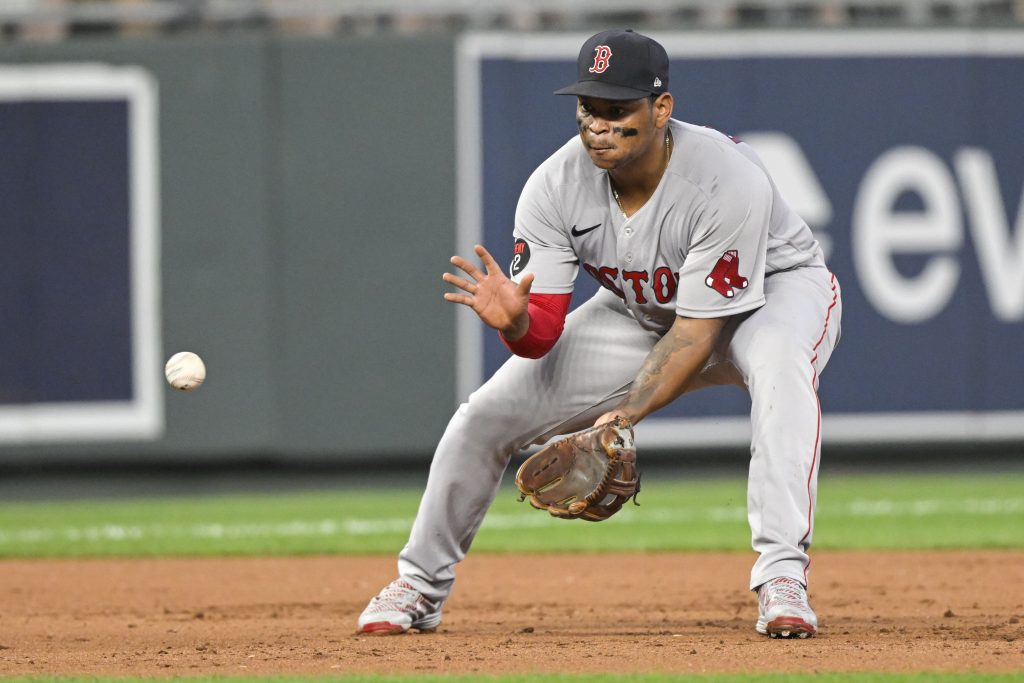
Specialized positions
Lastly, the specialized positions consist of two roles. These are known as the designated hitter and utility players. These players are generally responsible for unique roles and are used as replacements for pitchers or other positions.
The designated hitter
The designated hitter, also mentioned as DH, is a player that’s assigned to bat in place of the pitcher. This position’s responsibilities are only hitting the ball, and they’re only utilized in the American League.
However, this is not really considered a position in baseball but only a role. It’s quite similar to pinch hitters. They’re a role in which a player replaces a hitter that’s already in the game and bats for them.
While the pitcher is still part of the defensive layout and handles their regular duties, the designated hitter doesn’t take the field on defense.
The utility players
Generally, in sports, utility players are backups who are able to play several roles and positions. So, in baseball, a utility player is one that’s capable of playing more than one defensive position.
Typically, they are able to play positions such as second base roles and shortstop. They can sometimes play in third base but rarely in first base.
Utility players come in handy when starters need a rest and a replacement. They can also replace an injured player or play in late games to provide improved defense when their team is winning the game.
Team strategies and positional interactions
When it comes to team strategies and positional interaction, team managers play a vital role. Since baseball is a team-oriented sport, it requires teamwork, communication, and focus on achieving mutual success.
Generally, the manager creates and develops game strategies for the team in all areas. This includes offense, defense, and pitching. Additionally, positional interactions and communication among players results in better on-field performance.
From personal experience, I can confirm that players who’ve competed side by side for some time are more prone to achieve positive results. This is because they have learned from each other and will use that to improve their own abilities and performances.
However, below, I’ll introduce you to a popular strategy that was frequently used, called “defensive shift”. I’ll also go over the use of batter-pitcher matchups and how they affected positional interaction.
Defensive shifts
A defensive shift was a strategy in which fielders dramatically moved from their normal positions for tactical reasoning. Most commonly, the defensive shift was a play in which three infielders lined up on one or the other side of the base field. This was a contrast to the standard alignment teams have had.
Generally, this tactic was used to eliminate scoring opportunities for various players. The most common ones are used in response to specific game situations, such as a runner on base. These shifts could’ve been seen in almost every baseball game.
In addition, if the rules of the defensive shift are violated, the opposing team is rewarded with an automatic ball. Now, they have the option to decline the penalty and redo the play or accept the result of the play.
However, the MLB adopted a rule at the beginning of the 2023 season to ban the defensive shift. This resulted in an improved game quality by increasing the batting averages and decreasing strikeouts. Additionally, this allowed the players to exhibit their athleticism.
Batter-pitcher matchups
The batter-pitcher matchup is a game theory managers often use in baseball games. In this sport, it’s widely understood that the orientation of the hitter and the pitcher is a vital aspect of predicted outcomes.
Therefore, it is advantageous for the pitcher to have the same orientation as the hitter. However, it’s advantageous for the hitter to have the opposite orientation from the pitcher.
The root of such advantages is the ability to see the pitcher’s grip. Seeing the ball leaving the preacher’s hand, along with the motion and manner in which it’s thrown, has many benefits for the hitter. So, the managers from both teams have great tasks in lining up the pitchers and hitters.
They must determine when they’ll put in a relief pitcher that can match up against a hitter of a certain orientation. They must also determine when to put in a pinch hitter that can counter the pitcher’s arrangement. However, these matchups can get complicated by the presence of switch hitters or pitchers.
The interesting part of the batter-pitcher matchup is that the manager who picks second will always have the advantage. So, the theory’s optimal strategy is to always choose second.
Evolution of Baseball Positions
The evolution of baseball positions has undergone quite some changes throughout history. In particular, the shift resulted in a more fluid and interchangeable structure to a more defined and specialized gameplay.
The game has successfully adapted to the changes in the sport’s strategies, skills, requirements, and demands. This resulted in the positions we love and see today.
Here is a quick overview of how the baseball positions have changed over the years:
- The catcher’s position started taking shape in the 1860s and was considered a specialized role. Initially, catchers would be far behind the batter and catch the ball on one bounce. However, they moved closer over time and caught the ball directly.
- The pitcher’s role has significantly changed over time. Initially, they made their throws underhand and were primarily responsible only for that. Throughout time, pitchers began throwing overhand and developing various pitching techniques and methods.
- The infield positions emerged in the 19th century. The four roles each had their specific responsibilities and ground to cover. This resulted in better defense and strategic positioning.
- Outfielders were also introduced in the late 19th century. Their primary responsibilities included catching fly balls and preventing base hits.
- Designated hitters were created in the 1970s in the American League, allowing teams to have a strong lineup without sacrificing the pitcher.
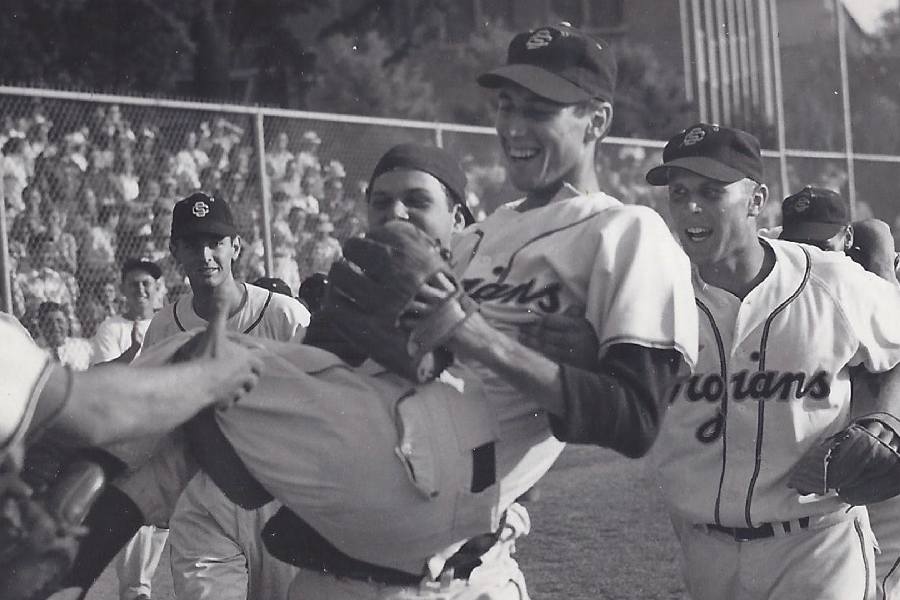
Frequently Asked Questions
How does the catcher contribute to the team’s success?
Catchers embrace their leadership by maintaining the peace and flow of the game. These players keep their team and pitcher focused regardless of the score or game situation.
How does a pitcher choose which pitch to throw?
When deciding which pitch the pitcher should throw, there are many factors to take into consideration. This includes the pitchers’ and hitters’ strengths and weaknesses, the game situation, and the particular count the pitcher is pitching in.
How do batters know what pitch is coming?
Oftentimes, pitchers have specific grips and hand motions for different types of throws. An experienced batter can recognize these factors and anticipate which type of throw is coming.
What is the pop-up priority system?
The pop-up priority system is created to help players in situations where more than two fielders can make a play on the ball with similar chances of making the catch. However, for most teams, there is a priority system which goes as follows:
- Outfielders have priority over infielders.
- Centerfielders have priority over corner outfielders.
What is the most important position in baseball?
The most important position in baseball may be considered to be the pitcher. However, their performance may be significantly impacted and dependent on the catcher.
Conclusion
In conclusion, all baseball positions have their own task, duties, and responsibilities that contribute to the team’s success. The diverse roles and strategic positioning are what made the game what it is today. It’s what I and millions of fans love about it.
These positions vary depending on whether the team is playing defense or offense. Each team comprises the infield, outfield positions, and personnel responsible for training, coaching, and overall team health. However, additional specialized positions are used in certain situations and games.
I hope this article has provided you with useful information that helped you understand the beauty of baseball.
